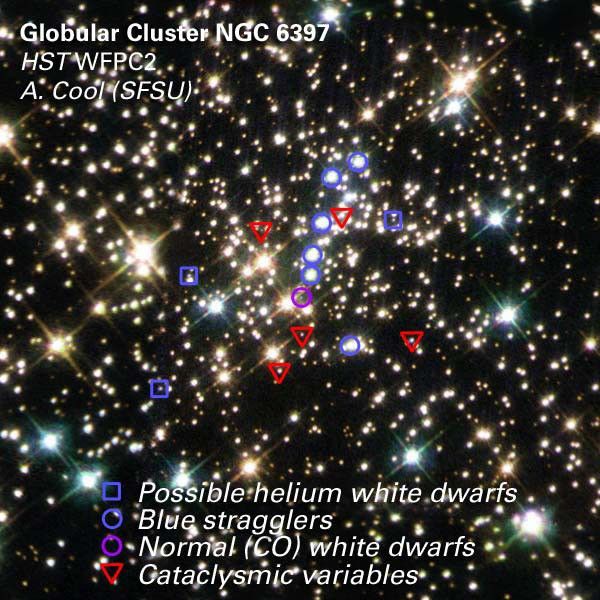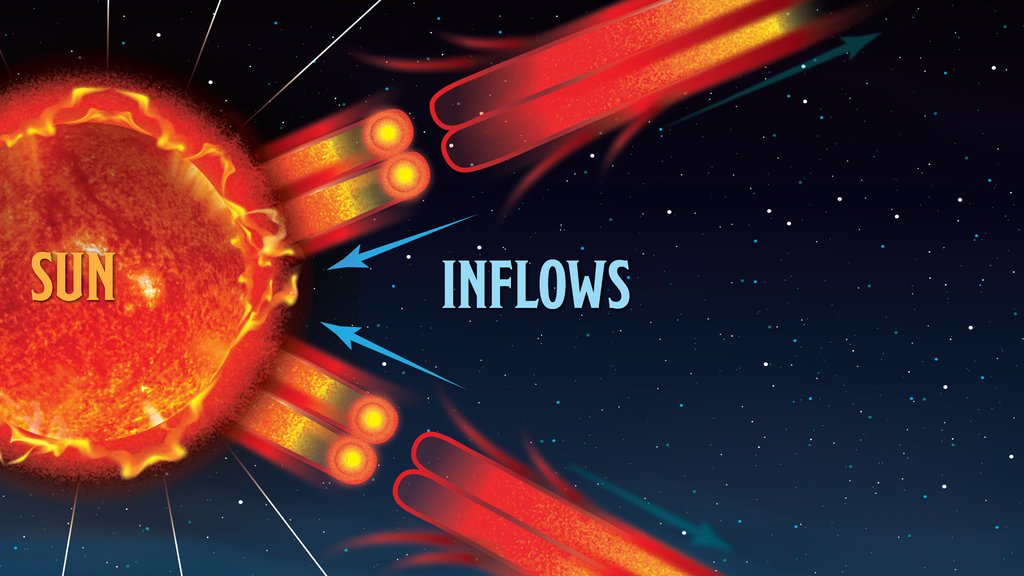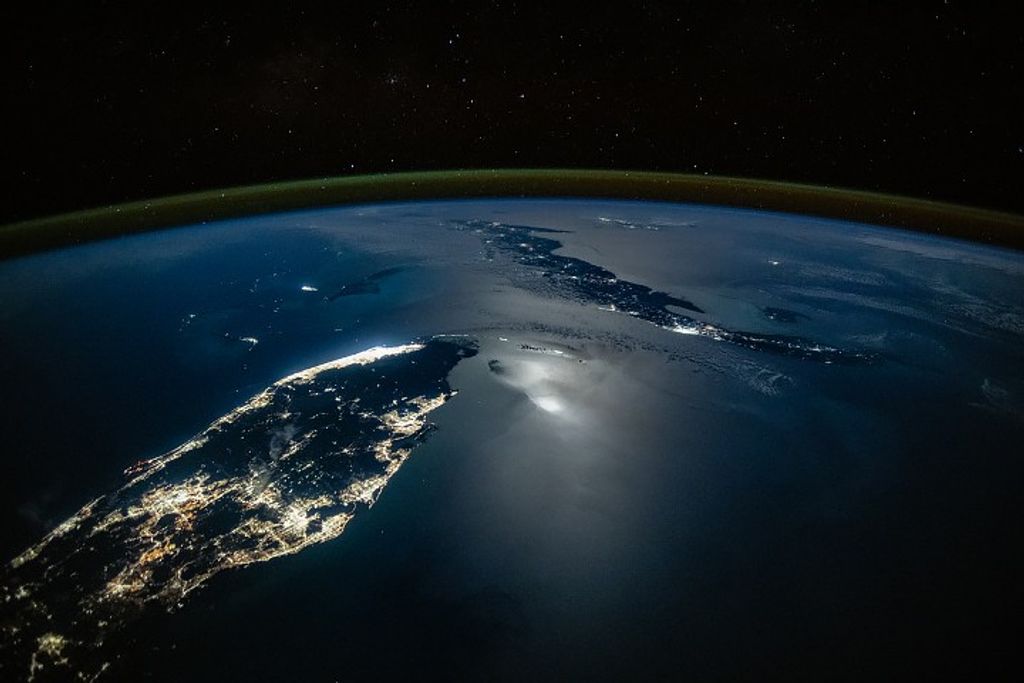1 min read
Stars Identified in the Center of NGC 6397

Four types of stars reside within the center of the globular cluster NGC 6397. They have been identified in the accompanying image as: 1) helium white dwarfs; 2) blue stragglers; 3) normal white dwarfs; and 4) cataclysmic variables.
1) Helium white dwarfs (blue squares): Three faint blue stars that do not vary in brightness can be seen near the center of the cluster. These stars may be very-low-mass white dwarfs, formed in the cores of giant stars whose evolution is somehow interrupted by a stellar collision or an interaction with a binary companion. When a giant star interacts with another star, it can lose its outer layers prematurely, exposing its hot, blue core.
2) Blue stragglers (blue circles): A blue straggler is a hot, bright, young star that is the result of a direct collision between two stars that have merged together to form a new star. They stand out among the old stars that make up the vast majority of stars in a globular cluster.
3) Normal white dwarf (purple circle): These stars appear throughout the cluster and form through the normal stellar evolution processes, when outer layers have been burned off of the star. Since they don't involve any stellar interactions, which occur predominantly near the cluster center, there are very few visible in this close-up image of NGC 6397. Nearly 100 such burned-out stars were identified in the entire image.
4) Cataclysmic variables (red triangles): A cataclysmic variable is a pairing of a normal, hydrogen-burning star and a burned-out star, or white dwarf. In this binary system, material pulled off the surface of the normal star by the white dwarf will encircle the white dwarf in an "accretion disk," and eventually falls onto it. The result of this accretion process is that cataclysmic variables vary in brightness.
About the Object
- R.A. PositionR.A. PositionRight ascension – analogous to longitude – is one component of an object's position.17h 40m 41.35s
- Dec. PositionDec. PositionDeclination – analogous to latitude – is one component of an object's position.-53° 40' 25.29"
- ConstellationConstellationOne of 88 recognized regions of the celestial sphere in which the object appears.Ara
- DistanceDistanceThe physical distance from Earth to the astronomical object. Distances within our solar system are usually measured in Astronomical Units (AU). Distances between stars are usually measured in light-years. Interstellar distances can also be measured in parsecs.8,200 light-years (2.5 kiloparsecs)
- DimensionsDimensionsThe physical size of the object or the apparent angle it subtends on the sky.This image is roughly 2 arcminutes (3.8 light-years or 1.2 parsecs) wide.
About the Data
- Data DescriptionData DescriptionProposal: A description of the observations, their scientific justification, and the links to the data available in the science archive.
Science Team: The astronomers who planned the observations and analyzed the data. "PI" refers to the Principal Investigator.These images were created from HST data from the following proposals: 9313: K. Noll (STScI), A. Cool (SFSU), J. Anderson (Rice), I. King (U. Washington), L. Frattare, H. Bond, C. Christian, F. Hamilton, Z. Levay, T. Royle (STScI) 7335: J. Grindlay (Harvard U.), A. Cool (SFSU), C. Bailyn (Yale U.), H. Cohn and P. Lugger (Indiana U.) 5929: I. King (U. Washington), A. Cool (SFSU), C. Sosin (UCB), H. Cohn and P. Lugger (Indiana U.), J. Grindlay (Harvard U.), P. Callanan (UCC), and C. Bailyn (Yale U.). Significant contributions to the science were also made by A. Bolton (MIT), J. Taylor (Harvard U.), and P. Edmonds (CfA). - InstrumentInstrumentThe science instrument used to produce the data.HST>WFPC2
- Exposure DatesExposure DatesThe date(s) that the telescope made its observations and the total exposure time.March 6 - 7, 1996, April 3 - 4 1999, and November 4, 2001, Exposure Time: 7 hours
- FiltersFiltersThe camera filters that were used in the science observations.F336W (I), F439 (B), and F814W (U)
- Object NameObject NameA name or catalog number that astronomers use to identify an astronomical object.NGC 6397
- Object DescriptionObject DescriptionThe type of astronomical object.Globular Cluster
- Release DateAugust 7, 2003
- Science ReleaseToo Close for Comfort
- Credit

Related Images & Videos
Share
Details
Claire Andreoli
NASA’s Goddard Space Flight Center
Greenbelt, Maryland
claire.andreoli@nasa.gov






























